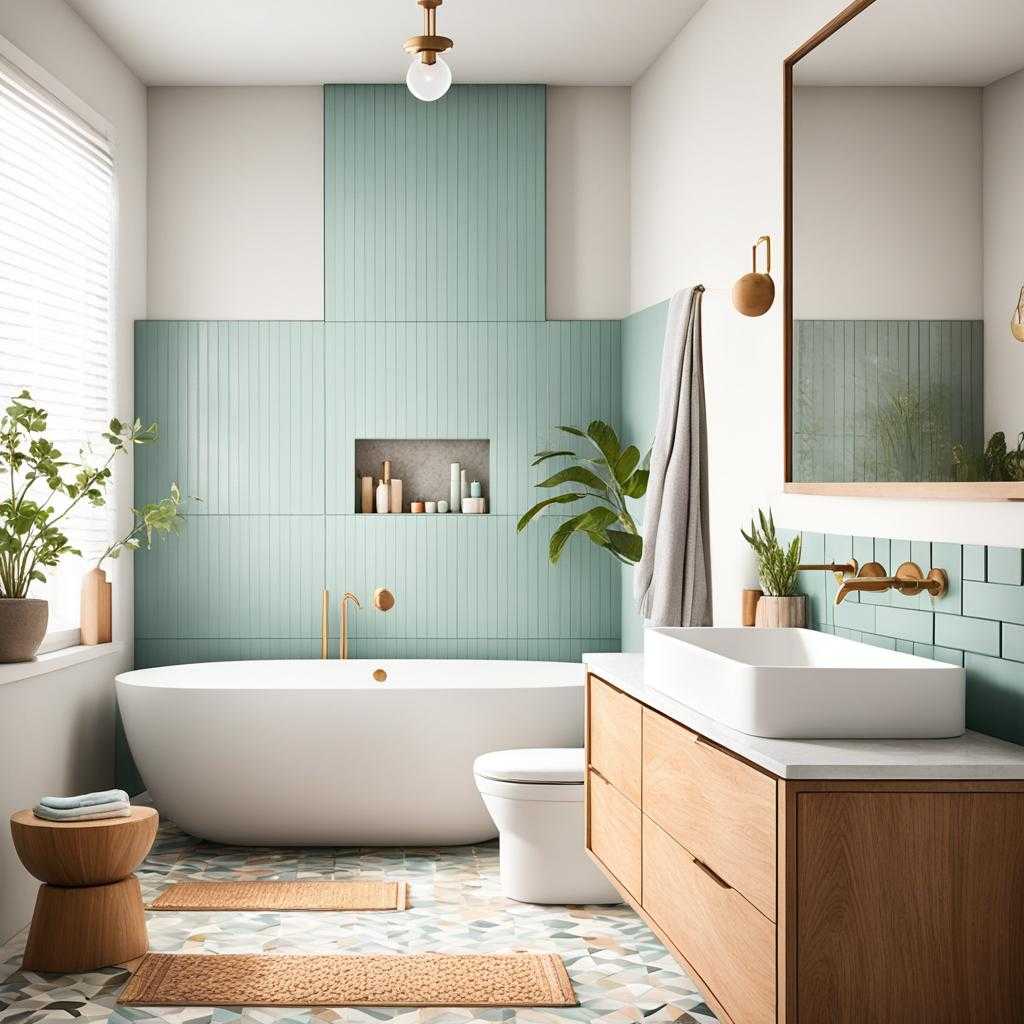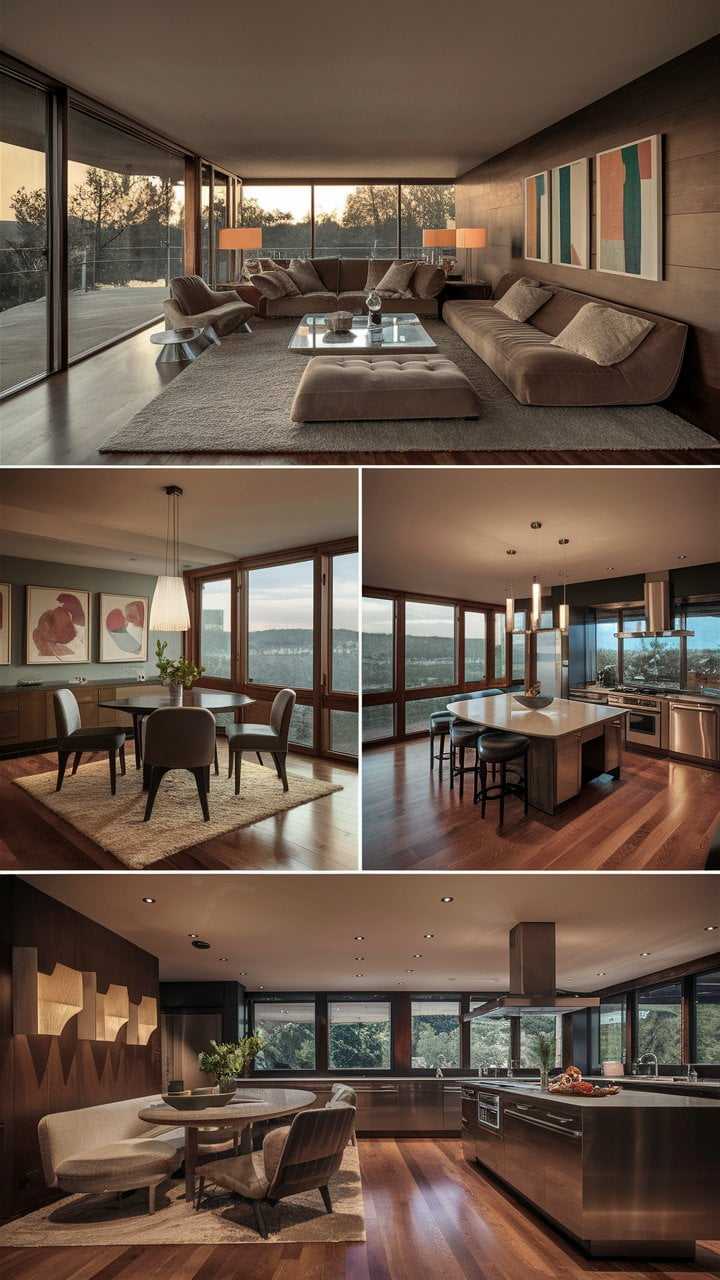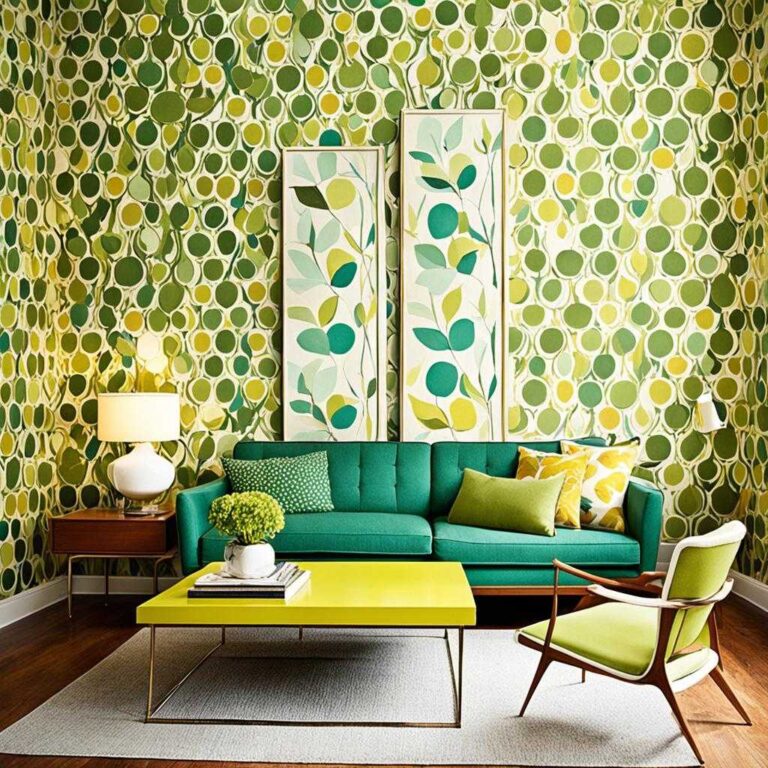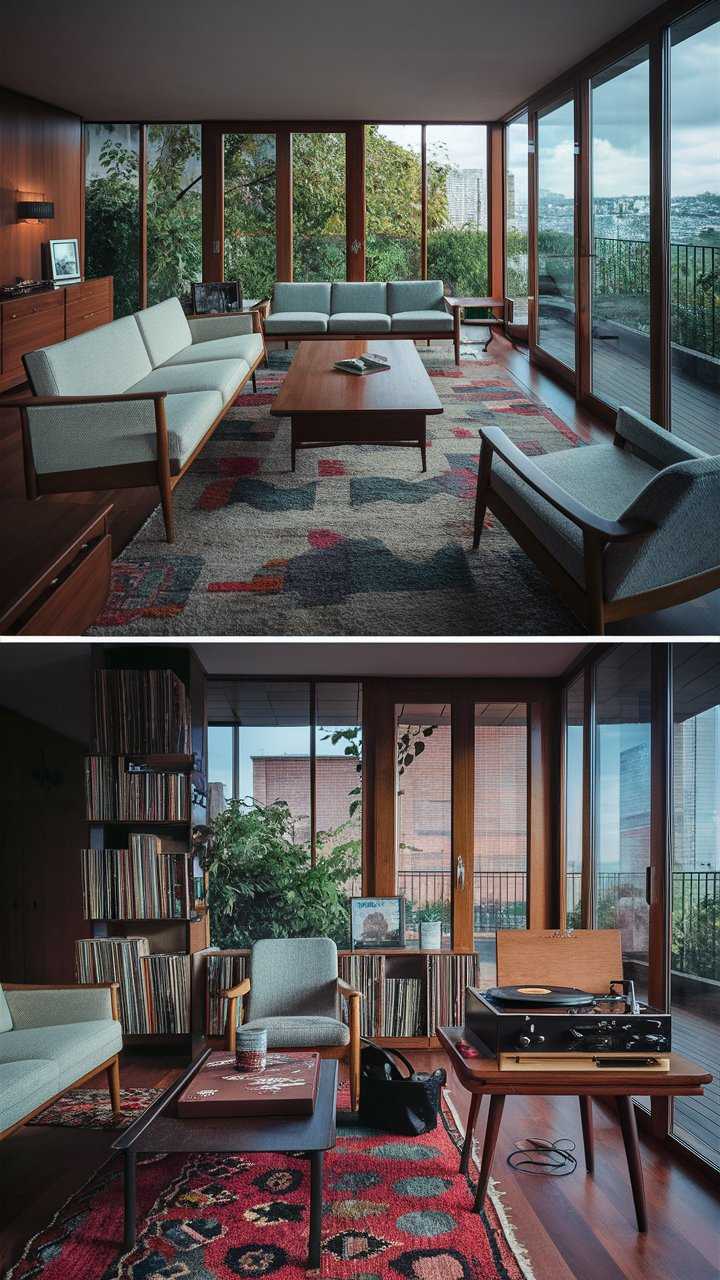Mid Century Modern Interior Design: Timeless Elegance
Mid-century modern interior design is all about timeless elegance. It’s known for its clean lines and organic shapes. It also mixes traditional and new materials in a unique way.
This style started after World War II and shows the era’s hope and new ideas. It moved away from old design styles. Mid-century modern homes use wood, metal, glass, and plexiglass. This mix shows how simple and functional beauty can be.

The look of mid-century modern celebrates natural materials like wood and stone. It also uses bold geometric patterns and eye-catching lighting. These add interest and a retro feel.
Open floor plans and indoor-outdoor living are key to this style. They make spaces feel bigger and connected. This approach makes the living areas feel open and flowing.
Key Takeaways
- Mid-century modern design is defined by clean lines, organic forms, and a focus on simplicity and functionality.
- This iconic style blends traditional materials like wood with non-traditional elements such as metal, glass, and plexiglass.
- Mid-century modern interiors often feature open floor plans, natural textures, and statement lighting fixtures.
- The mid-century modern aesthetic celebrates the beauty of natural materials and geometric patterns.
- This timeless design movement reflects the optimism and innovation of the post-World War II era.
Mid Century Modern: A Design Movement Defined
After World War II, the mid-century modern design movement started. It’s known for its timeless beauty and lasting popularity. This style is all about clean lines, natural shapes, and focusing on both looks and practicality.
Clean Lines and Organic Forms
Designers of this time loved minimalism. They used clean lines to make things look balanced and simple. Furniture had sleek shapes, and buildings had smooth curves. This style took inspiration from nature, mixing beauty with usefulness.

Embracing Functionality and Simplicity
The idea behind mid-century modern design was that “form follows function.” Designers aimed to make things that looked good and worked well. They created furniture and buildings that were easy to use and looked great.
Today, mid-century modern design still inspires and affects interior design. Its lasting appeal and focus on practicality and simplicity keep it popular.
Mid Century Modern History and Influences

The mid century modern design started in the mid-20th century. This was a time of great creativity and a wish for change after World War II. The style, from the 1940s to the 1960s, began in America and spread worldwide. It was a time of rebuilding, where designers aimed to create a new look that showed post-war optimism and innovation.
The mid century modern style was influenced by earlier styles like Bauhaus and International Style. These styles valued simplicity and the balance between form and function. They blended with American design to create the unique mid century modern style we admire today.
Post-War Optimism and Innovation
After World War II, there was a lot of hope and a feeling of endless possibilities. Designers wanted to leave the past behind and explore new ideas. This mood is seen in the mid century modern design’s clean lines, organic shapes, and focus on usefulness.
Bauhaus and International Style Roots
The mid century modern style was also shaped by Bauhaus and International Style. These European ideas valued simplicity and usefulness. When combined with American tastes and the post-war mood, they created the mid century modern style we love today.
“Mid-Century Modern design marked a big change in how we viewed our living spaces. It moved away from the old, cluttered styles to a new era of sleek elegance and practical beauty.”
Iconic mid century modern interior design Furniture

Mid-Century Modern furniture is known for its fresh ideas, simple beauty, and lasting charm. Visionary designers like Charles and Ray Eames, George Nelson, and Isamu Noguchi changed furniture design forever. Their famous pieces, like the Eames Lounge Chair and the Noguchi Table, are still sought after for their comfort, beauty, and usefulness.
Eames, Nelson, and Noguchi Classics
The Eames Lounge Chair, made by Charles and Ray Eames, is a key piece of Mid-Century Modern furniture. It has a soft leather seat, a curved wood shell, and a sleek chrome base. This chair combines luxury and style perfectly. George Nelson’s Marshmallow Sofa is another classic, known for its fun design and ability to be customized. Isamu Noguchi’s Noguchi Table shows how art and practicality can come together in one piece.
Scandinavian Design Influences
Scandinavian design also shaped Mid-Century Modern style, focusing on simplicity, usefulness, and natural materials. Pieces like the Wishbone Chair by Hans Wegner and the Egg Chair by Arne Jacobson became staples of Mid-Century Modern homes. They feature organic shapes, soft curves, and warm wood, showing how furniture can be both beautiful and practical.
Mid-Century Modern furniture has a lasting impact on design. These designers combined beauty with function, leaving a lasting mark on interior design. They inspire homeowners and design lovers to this day.
Stylish and Sculptural Lighting

Lighting was key in the Mid-Century Modern look. Designers made fixtures that looked good and worked well. The Sputnik chandelier is a top example from this time. It was named after the first satellite in space. Its design looked like a starburst, showing the era’s love for space and tech.
George Nelson’s Bubble Lamp series is another big hit from back then. These lamps had soft light and unique shapes. They became a must-have in Mid-Century Modern homes. Gino Sarfatti, an Italian designer, also made a mark with his simple yet smart lighting, like the Model 2097 chandelier.
Mid-Century Modern lighting also featured geometric and sculptural shapes. These designs were not just lights; they were also pieces of art. They made rooms look better and started conversations.
| Iconic Mid-Century Modern Lighting Designs | Key Features |
|---|---|
| Sputnik Chandelier | Futuristic, starburst design; captured the era’s fascination with space and technology |
| George Nelson Bubble Lamp | Soft, diffused light; unique silhouettes; harmonious blend of form and function |
| Gino Sarfatti Model 2097 Chandelier | Minimalist yet efficient design; exemplified the style’s emphasis on clean lines and innovative engineering |
These mid century modern lighting designs are still loved today. They range from bold and futuristic to simple and elegant. They show the lasting beauty of the Mid-Century Modern style.
“Lighting is the key to creating a mood and ambiance in a space. Mid-Century Modern designers understood this, crafting fixtures that were both beautiful and functional.”
Mid Century Modern Kitchen Design
The mid-century modern kitchen is a mix of old and new. It’s known for its unique colors, natural materials, and smart layout. This style combines the kitchen’s practical needs with the beauty of the mid-century modern look.
Earthy Tones and Natural Materials
Mid-century modern kitchens often use calming colors inspired by nature. Colors like olive green, mustard yellow, and warm terracotta make the space feel welcoming. These colors go well with natural materials like teak or walnut cabinets, adding an organic feel.
Laminate countertops and linoleum flooring were big in this era. They were tough and easy to keep clean.

Open Layouts and Seamless Flow
The mid-century modern kitchen values simplicity and usefulness. It has an open layout that connects the cooking area with the living spaces. This design makes the kitchen easy to move around in and connects it with the outdoors.
By removing walls, the kitchen becomes part of the living area. This creates a space that feels open and welcoming.
“The open layout of the mid-century modern kitchen encourages a natural and effortless integration with the surrounding living areas, creating a harmonious and inviting atmosphere.”
Retro-Inspired Bathroom Aesthetics

Mid century modern bathrooms mix vintage charm with modern functionality. They often use earthy tones and geometric patterns. Colors like olive green, mustard yellow, and teal add a retro touch.
Tile Choices and Color Palettes
Mid century modern bathrooms are known for their unique tile choices. You’ll see hexagonal, square, or rectangular tiles in natural colors. These tiles often have geometric patterns or textures, making the space interesting.
The colors in these bathrooms come from nature. Olive green, mustard yellow, and teal are common. They bring a mid-20th century feel. Mixing these colors with modern fixtures creates a timeless look.
“The key to achieving a successful mid century modern bathroom is to strike a careful balance between vintage aesthetics and contemporary functionality.”
Choosing the right tile and colors is key to a mid century modern look. This mix of old and new makes a bathroom both beautiful and practical. It’s the essence of mid century modern design.
Conclusion
Mid-Century Modern interior design has lasted for decades, showing a timeless elegance that still draws in fans across the U.S. This style is known for its focus on new ideas, being useful, and mixing different materials well. It’s a versatile style that fits well with today’s homes.
This design also uses natural, sustainable materials, which is popular today. Its history and nostalgic feel add interest and depth. Designers keep looking to this era for inspiration, keeping Mid-Century Modern design popular in interior design.
Mid-Century Modern design is known for its clean lines and natural shapes. It values being useful and simple. This style has greatly influenced designers and homeowners over the years. Its lasting impact shows the lasting power of good design. It’s a classic style that will keep shaping interior design in the future.






